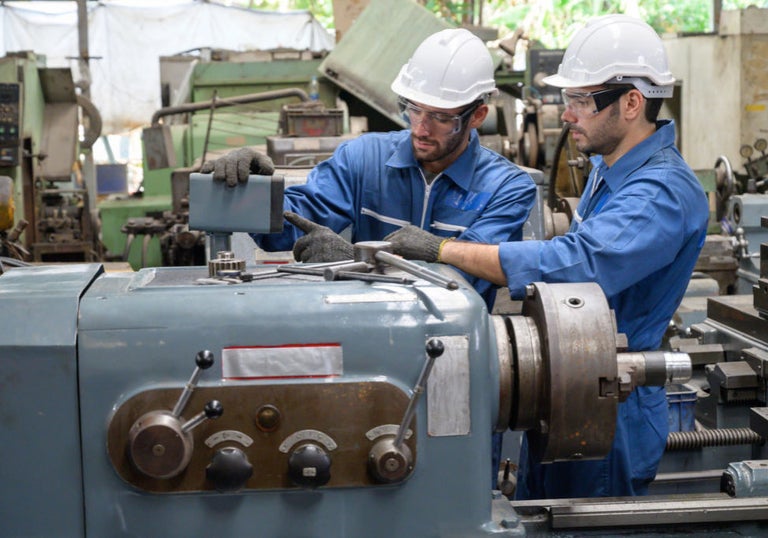We will go over the three different types of mechanical looseness below and discuss how they generally appear on the spectrum.
Some people say there are really only two basic types of looseness: rotating and non-rotating, but if we are to thoroughly discuss mechanical looseness, we really need to address three different types. But just know that sometimes you will hear Type A and Type B looseness discussed as if they are essentially the same.
The first type of mechanical looseness is known as Type A
This type is caused by structural looseness or weakness of the asset’s structure. This could be structural faults or weaknesses with the machine feet, baseplate, or foundation. Other possible causes of Type A mechanical looseness could be deteriorating grouting, loose hold-down bolts at the base (possibly caused by an improperly performed shaft alignment), or soft foot.
On the spectrum, Type A mechanical looseness has a time waveform of 1 pulse per revolution.
The second type of mechanical looseness you may encounter, Type B
Is generally caused by loose pillowblock bolts, cracks in frame structure, or in the bearing pedestal. The time waveform is typically two pulses per revolution.
The last type of mechanical looseness, Type C, is the most complex.
It is generally caused by improper fit between components parts, such as bearings and their housing, a bearing liner loose in its cap, excessive clearance between a bearing and its sleeve, or a loose impeller on a shaft.
The spectrum for Type C mechanical looseness will be quite cluttered and will often showcase a raised noise floor to indicate the presence of looseness. The spectrum will also showcase many harmonics, which, as the Technical Associates Vibration Diagnostic Handbook explains, is due to nonlinear responses of loose parts to dynamic forces from the rotor. Type C mechanical looseness spectra data may also vary widely from one measurement to the next due to variables such as the rotor shifting position.
When analyzing vibration data involving mechanical looseness, Type C will likely be the most challenging since the time waveform consists of a non-repeating pattern from one revolution to the next. This kind of looseness may also cause subharmonic multiples at 0.5X, 1.5X, 2.5X, and so on. Multiples may run as high as 10X.
We recommend the Technical Associates Vibration Diagnostic Handbook for a quick pocket guide to reference on mechanical looseness. You can also check out Acoem’s ’s other blogs on this topic below:
- Mechanical Looseness Identification
- Machinery Vibration Problems and Solutions, Part 5, Mechanical Looseness
- How to Differentiate Unbalance and Looseness on the Spectrum








